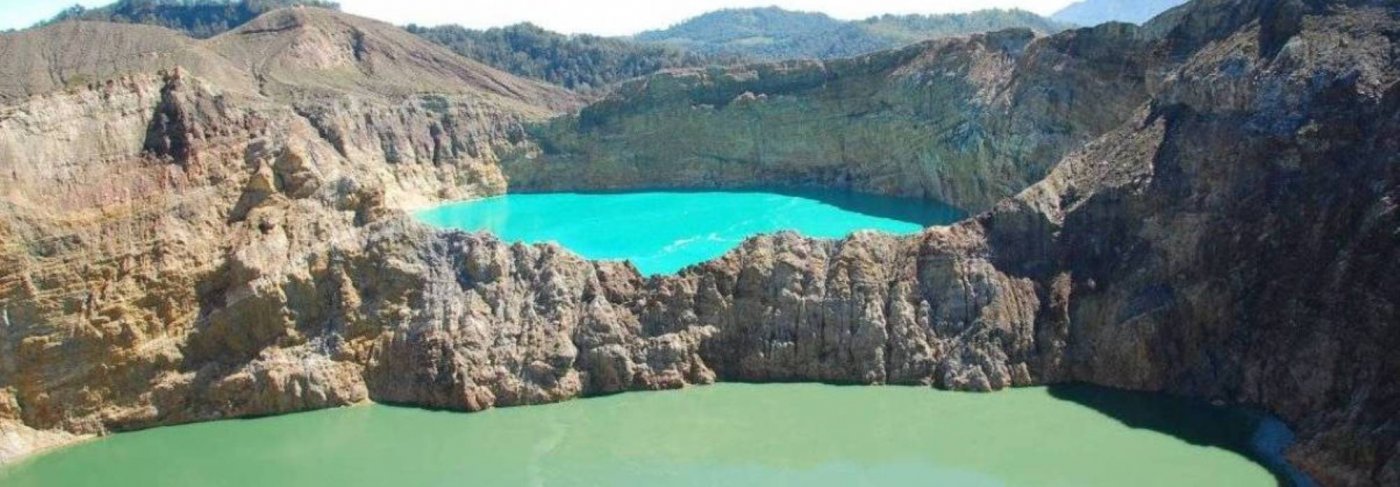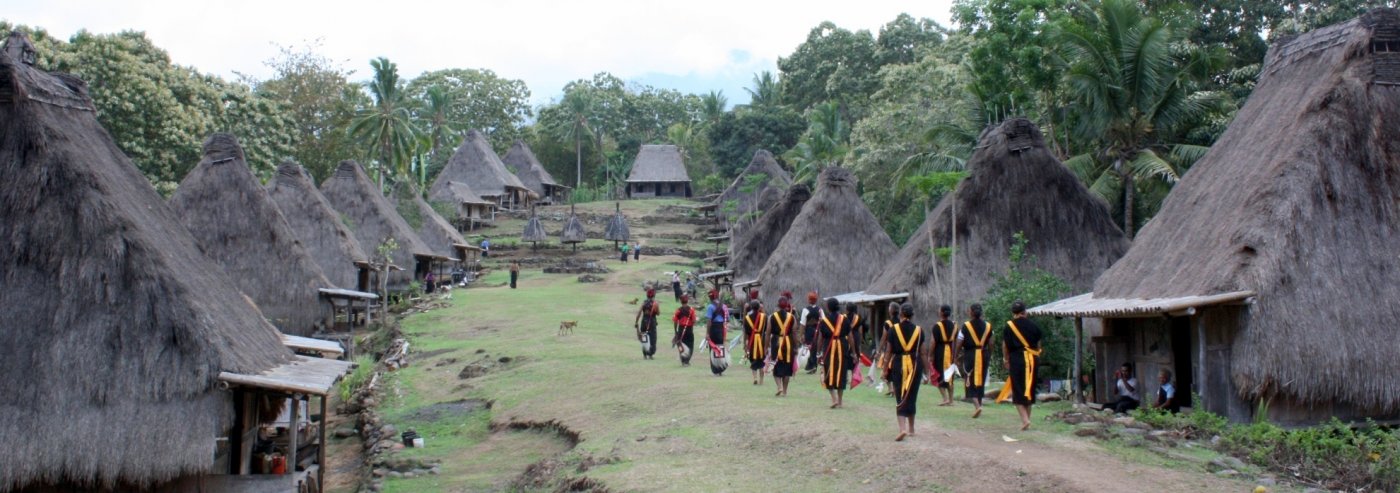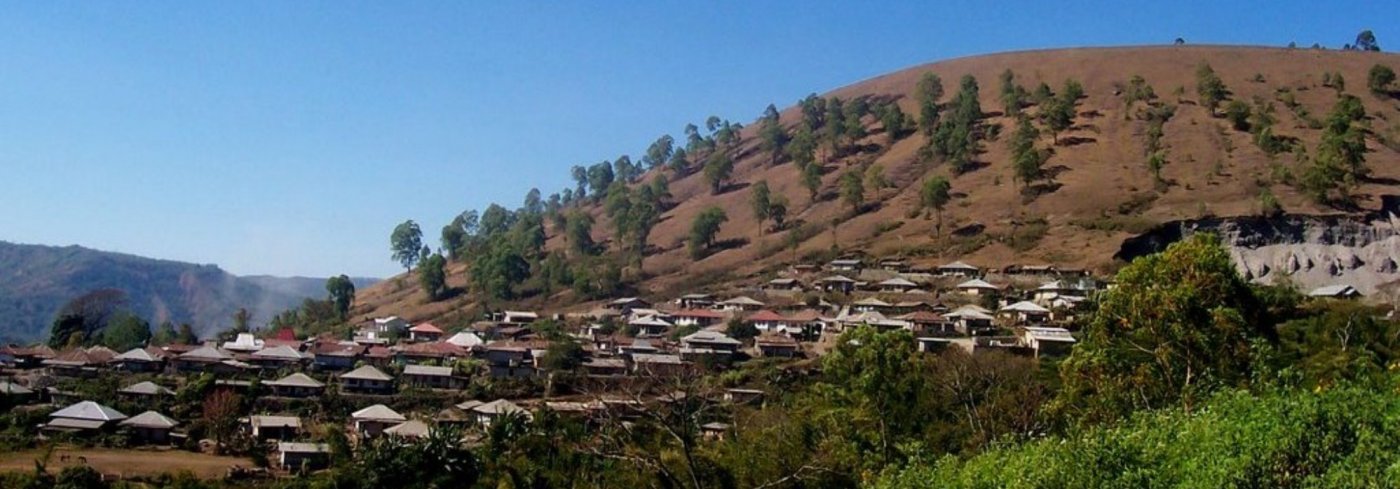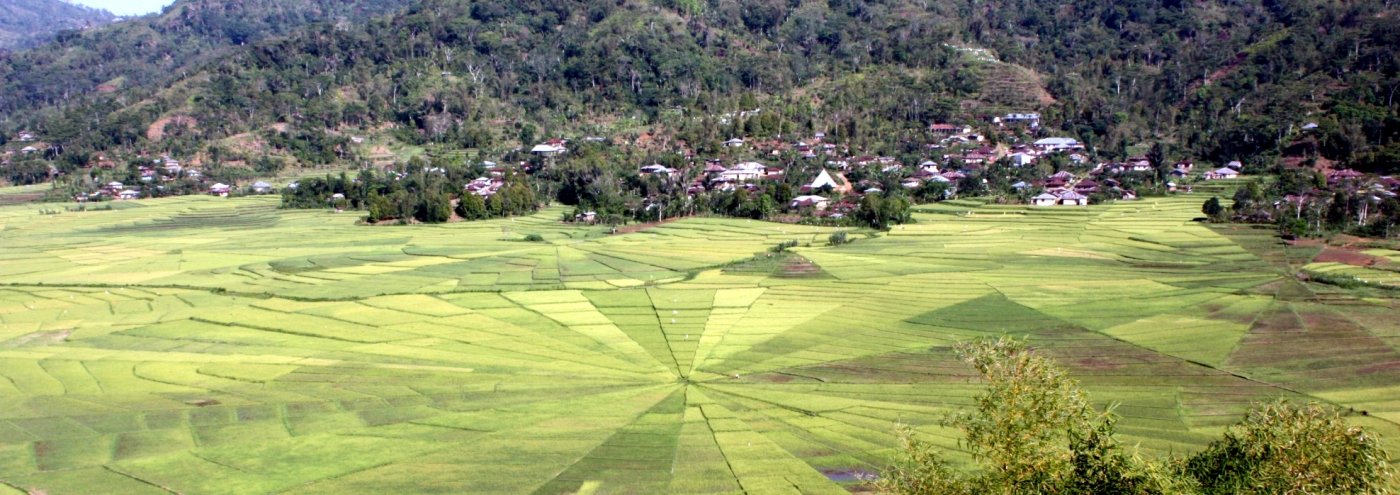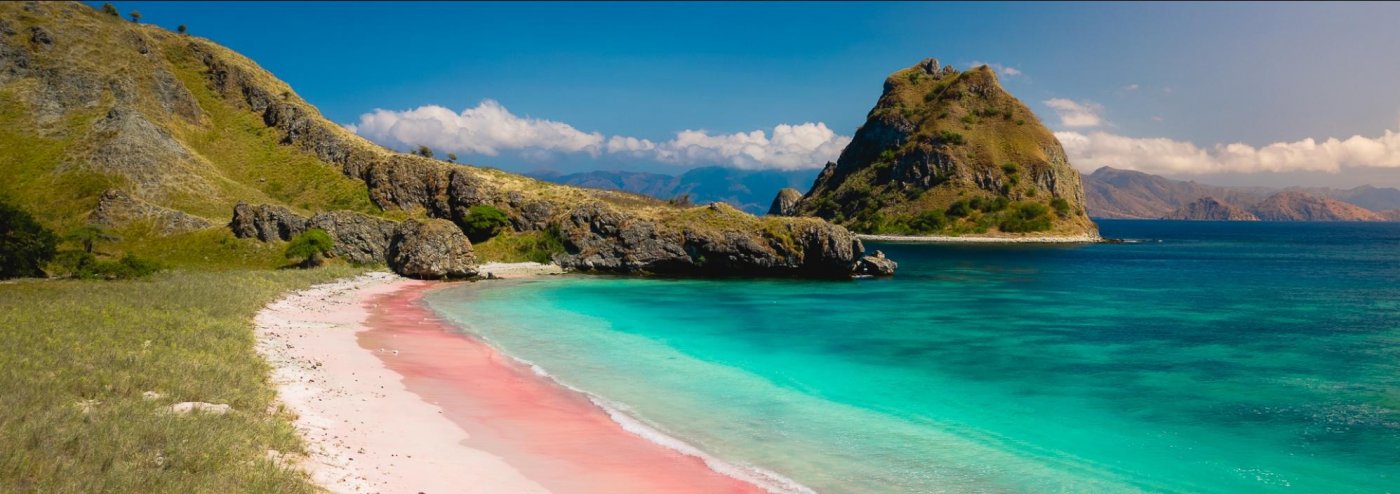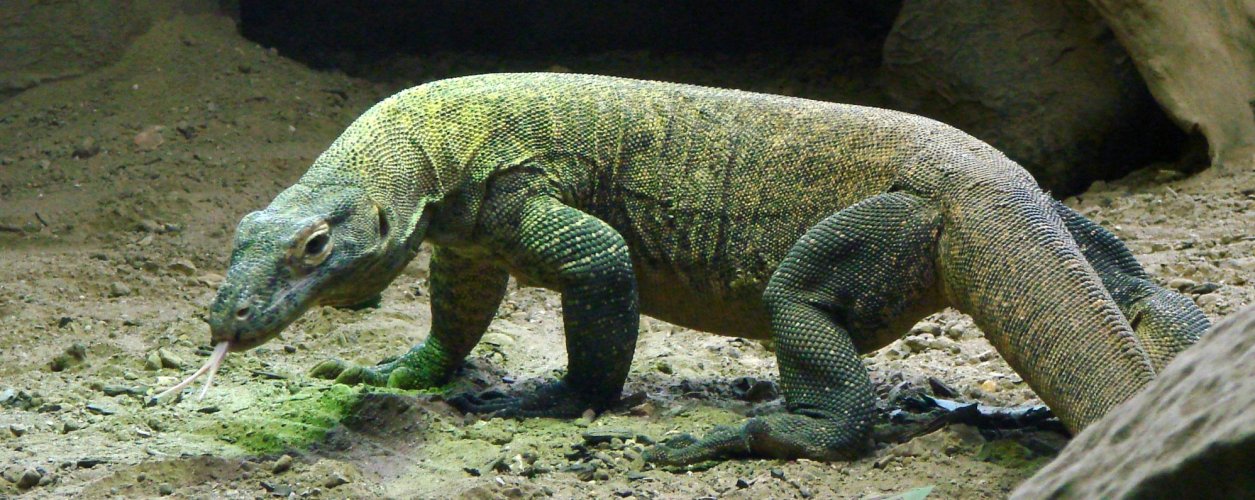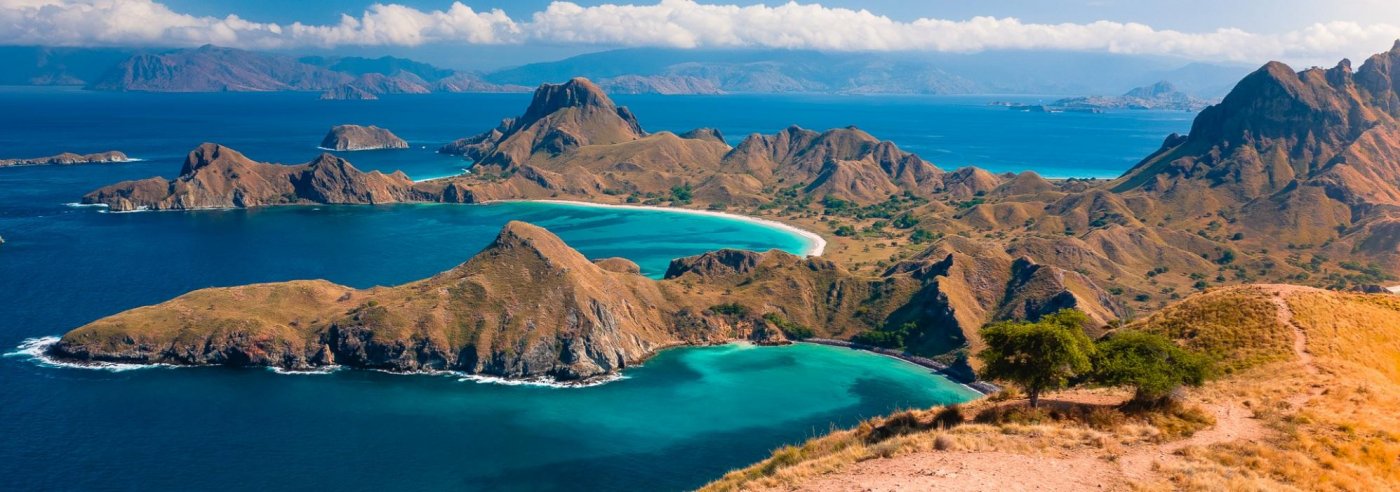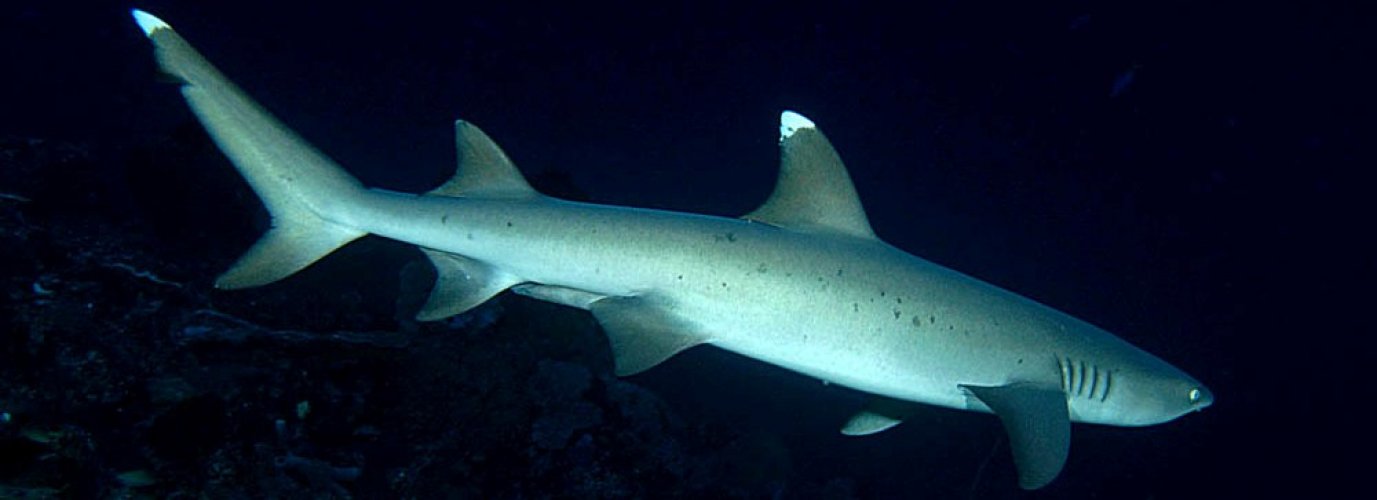Maumere Divespots
Divespots Maumere
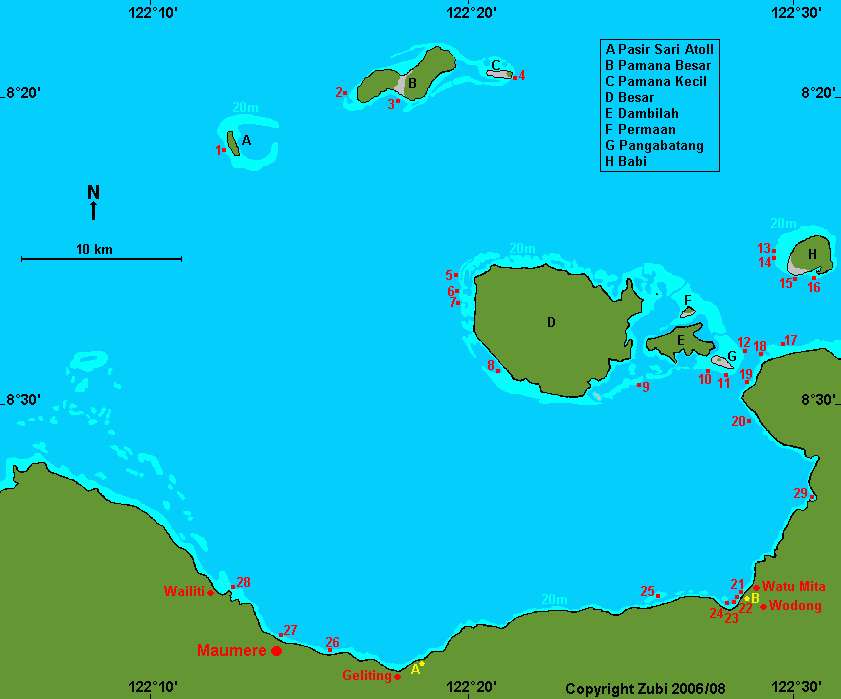 1. Atoll Pasir Sari (Gosong Bone Atoll)
1. Atoll Pasir Sari (Gosong Bone Atoll)
2. Pamana West
3. Pamana South
4. Pamana Kecil
5. Labuan Tur
6. Easteregg
7. Happy Wall
8. Maragajong
9. Dambilah
10. Fishsoup
11. The Channel
12. Pangahbatan North
13. The Crack
14. Majella's Ledge
15. Poison Sardeen
16. The Village
17. Bugis House
18. Bad Mood
19. Shark Point
20. Tanjung Darat Pondok
21. New Ankermi Slope
22. Wairterang Wreck
23. Mandarine Patch
24. Old Ankermi Muck
25. Waigete
26. Pertamina Jetty
27. Maumere Harbor
28. Wailiti Reef
29. Zubinarius
30. Little O
Atoll Pasir Sari and Pulau Pamana
I did only a few dives here on a liveaboard trip in 2002, but didn't like it that much, because the corals were at some places totally covered with algae and funnel weed. Visibility was quite bad and we heard explosions from dynamite fish bombs on both dives. I talked to Kermi my dive guide from Ankermi Happy Dive about this place and he said, that specially the Atoll Pasir Sari (No1) is quite nice if you dive at the right places but you have to be there early in the morning and go deep and Pamana west (No 2) is also a great dive site. Since it is way out from the bay it isn't visited much though by dive operators from Maumere, more by liveaboards.
Pulau Besar, Dambilah and Pangabatang
One of the few barrier reefs in Indonesia occur here at Pulau Besar (another one is found in the Togian islands and Sumbawa) where the reef also forms a large lagoon in the east. The group of islands can be reached from Maumere or Wodong by boat and can also be visited while traveling on one of the liveaboards which pass by on their way to and from Alor or Komodo.
5. Labuan Tur: This dive site on the west coast of pulau Besar is supposed to be nice but I haven't dived there yet. Since this dive sites is closer to Maumere it is possible that dive operators from Geliting (Sea World / Budi Sun) dive here more regulary.
8. Maragajong: You start the dive in a kind of small valley with huge coral blocks which are cleaning stations for sweetlips and batfish. With some patience you can see the sweetlips opening up their mouths and the cleaner wrasses flittering in an out of it. Then you swim over the reef edge and reach a steep slope. The visibility here was incredible, I guess about 40 meters and we went down to the huge gorgonians fans and barrel sponges while out in the blue mackerels and small tunas passed by and a large schools of long-jawed mackerels (Rastrelliger kanagurta) were opening their mouths always in synchronous movement. Just beautiful!
9. Dambilah: This dive is perfect for relaxing, taking some time to search for small animals but at the same time enjoying the nice underwater landscape like the coral gardens at the top and the soft corals on the slope. Our trove included two species of flatworms, shrimps and clingfishes in the featherstars, orang utan crabs in the bubble corals, a huge but shy crocodilefish, pipefishes in the sandy areas and my favorite - a large beautiful Phyllodesmium kabiranum nudibranch which looks like a anemone because the cerata are shaped like tentacles.
11. The Channel / Fish Soup: This is one of my favorite dive sites in the area, the landscape is very impressive with huge Gorgonian sea fans, a dramatic precipice where sharks, jacks and rays congregate and a beautiful coral garden to finish the dive. A place you come up and out of the water always with a smiling face and a "Wow - I want to go diving here again!"
Between the mainland and Pangabatan there is a channel which is about 2 km wide. The current flowing through can be quite fierce, so this dive site is only for experienced divers. (Click here if you want to know more about how to assess accurately the rate of current). You dive down through a coral garden interspersed with sand until you reach the deeper part, a large plateau of sand with coral blocks and sea fans. Here at about 30 meters you should take some time to look out in the blue, there is a good chance to see eagle rays, marble rays, mackerels and tunas and on the sand between the corals often lie white tip sharks or cowtail rays.
You continue with the current and reach a beautiful coral garden. With the morning light it is magic! Unfortunately you usually can't spend that much time here because the computer tells you that you have to go up. You continue drifting to a sandy slope and finish the dive between hard corals, sea fans and lots of small reef fish. A good place for large fish and sharks but we also found on each dive some interesting small animals for example a rare whiskered pipefish, nudibranchs and several leaffish, crocodile fish, mantis shrimps and cuttlefish. Often large groups of bumphead parrotfish gather in the sandy areas, on one spectacular dive easily a hundred of them past us, going in the other direction!
12. Pangabatang (Pangahbatan) North: Normaly diving here is quite easy, so it is a good place for beginners, but if there is a strong current you have to stay close to the reef and finish the dive before you are swept around the corner into The Channel. Your start on a beautiful coral garden with white sand and large coral blocks and then you continue on a slope nicely covered with healthy soft corals and gorgonian sea fans. There is a good chance to see eagle rays or sharks, but you should also check out the corals for shrimps and nudibranchs. To finish the dive you go up to a shallow coral garden, often there are marine turtles and even sometimes banded sea kraits. On one occasion we also saw a dugon. Also a good place for snorkelling and the Pangabatan island is a really nice place for a little stroll on the white sand.
Pulau Babi
Pulau Babi lies beyond Pulau Besar and was hit specially hard by the 1992 tsunami. The two villages located on the flat sandy land in the south were totally wiped out by the waves who topped 5.6 meters. Of the population of 1'093, 263 humans were victims of the tsunami. The area was declared as too dangerous to be inhabited and therefore the villages had to be abandoned and no rebuilding was permitted. Today you can see only makeshift bamboo huts here, which are used just part of the year for fishing. The beach is a nice snorkeling area, though. As far as the diving goes, I didn't notice any damaged areas here, actually the amount of different species was impressive - but at one dive site (The Crack) you can see the results of the earthquake.
13. The Crack: You dive at a place, where a huge crack, about 18 to 20 meters down and reaching into the reef for about 30 meters was formed by the earthquakes which caused the 1992 tsunami. The crack is about 70cm wide, so it isn't possible to swim in. Table corals and other hard corals growing here have started to close the gap, but if you swim on top you can see down into the inner structures of the reef.
The diving here is very nice, a beautiful and colorful wall covered with sea fans, coral bushes, hydroids, sponges and lots of sea squirts going down to 25 meters and then becoming a slope. It is well worth looking in all the crannies and overhangs, because a lot of small animals are hiding here. Apart from plenty of nudibranchs, shrimps and crabs we also found several species of flatworms and on the very edge of the reef two yellow-brown leaffishes and further down a beautiful purple one in a sponge under a overhang there was even a small giant frogfish! If you are lucky it is possible to see hammerhead sharks here, eagle rays and turtles, since you are facing towards open water. Actually in a very memorable dive Kermi and myself saw around a dozen huge marble rays feeding - the noise of the flapping and crunching was very impressive! Unfortunately we were on 6 meters for our safety stopp and couldn't go down, but we sure stayed there until our tanks very nearly empty, following the group on their feeding spree.
14. Majella's Ledge: Depending on the currents you either start from the Crack and go to the left on the wall or you dive towards the crack from the south on a slope that ends as a wall. There is a large saddle going out from about 25 meters down to 40 meters. Down there is a good place for big sting rays and sharks. The whole wall is covered with gorgonians, black corals and hydroids, so you usually find a lot of nudibranchs, small shrimps and crabs like Orang Utan crabs or spider crabs. A nice dive, usually with good visibility.
15. Poison Sardeen lies north of the Crack and forms a steep slope. Groups of Spanish mackerels, sharks and eagle rays can be seen and in some of the Muricella Gorgonians are small pygmy seahorses.
16. The Village: A bit to the north of the small fishing village lies a great dive site, we dived there several times. When you enter the water you go down on a sandy slope (doesn't look like much), straight away there was usually a large schools of silvery long-jawed mackerels around us and then Kermi, our dive guide called the sharks - a special trick with a bottle - and they came! First five black tipped reef sharks, all starting to circle around us, then other fish like jacks and tunas came and I didn't know where to look anymore, so much was happening! My dive buddy told me later, that a shark had been behind me, very close, but I didn't notice, because I concentrated on what was happening in front of me.
We continued the dive on a nice miniwall with lots of soft corals and beautiful gorgonian fans, many of them are of the species Muricella, a gorgonian known to be the habitat of the pygmy seahorse. So we looked closer and actually found one, but I guess there must be more. We dived further towards the coral garden, all the time seeing a few sharks, jacks and also a very large tuna. The coral garden is a nice place to finish the dive, specially the large coral blocks there which are cleaning stations with dancing shrimps underneath and glass fish clouding everything.
Flores Main Land
17. Bugis and 19. Shark Point: These dive sites on the mainland are supposed to be nice, but I haven't dived there yet. Shark point is a steep wall where you make a drift diveand with strong currents sometimes, Bugis is a drop off.
18. Bad Mood: At this dive site the point where you can jump in is difficult to find, because it is a bay where the current forms whirls that change their pattern often. There is sometimes quite a lot of current so you can make a nice drift dive. You have to go down to about 30 meters and hang out, because this is an excellent place for sharks (which I guess are in a bad mood because they are not allowed to eat the divers). Lots of whip corals and large sea fans in the lower areas, not so much covering in the upper areas but there we found a reef octopus under a coral block and saw a nice cuttefish.
20. Tanjung Darat Pondok: While this dive site had some damage from the tsunami of 1992 it has recovered nicely. The mini wall on the upper meters is nicely covered with corals. Below lies a large plateau with rubble and large chunks of dead hard corals now interspersed with soft corals. The plateau abruptly changes to a steep wall, if visibility is goodyou can look down to 50 meters where it flattenes out some.
We started our dive and reaching the edge of the plateau, the depths beckoned and we glided down. Straight away I saw an eagle ray and then suddenly a turtle accompanied by two remoras swam out from between my feet and into the blue. During the dive we saw mackerels, small tunas and some lazy jacks and deep down huge groupers. This is also a good dive site for sharks, sometimes hammerheads, but it is a deep dive and such more for experienced divers. The safety stop on the rubble plateau was also interesting, we found Marioniopsis nudibranchs, juvenile angelfishes and there is often a frogfish on one of the coral blocks.
30. Little O: A really nice dive site, that Kermi descovered in 2014. Already from the boat you can see one beautiful table coral after the other growing on the rim of the drop off. Then you start the dive, first a mini wall, then a small plateau and a steep wall, all covered with healthy corals and sponges. Small anthias, damselfish and angelfish everywhere and of course if you dive with Kermi he always finds some nudibranchs, orang utan crabs, shrimps and flatworms!
MUCK DIVING ON FLORES MAINLAND
21. New Ankermi Slope: Just in front of the Ankermi Happy Dive Resort is a small reef. Coral cover is not so good and there are patches with rubble and a large sandy area but the place is great for small and weird critters. The sand is very fine, mixed with ash from the nearby volcano Egon (report about eruptions / satellite pictures / (Blog about the volcanic activity) and even small movements from the fins can raise a cloud. Seems all the critters that lived in Ankermi Bay (No 24) moved here when Kermi and Claudia moved to their new resort - I saw frogfishes (counted 4 different species), ghostpipefishes (2 species), mimic octopus, starry octopus, Ambon scorpionfish, stingfish, devilfish, special pipefish, mandarin fishes, seahorses, eels and moreys and then really a lot of slugs and nudibranchs, shrimps, crabs and mantis shrimps. I have a camera with a strong macro lens, but I recommend that you take a magnifying glass with you if you want to see all the treasures! And make a nightdive!
22. Wairterang Wreck (Wodong): This wreck lies close to Ankermis between 13 and 32 meters about 70m from the beach on sandy bottom and is about 60m long. I recommend you dive first along the right hand side and go down to the deeper part straight away, then circle back, now over the wreck and finish the dive exploring the sandy area.
The wreck is very open, one part in the middle is badly crumbled but on the top there is not much damage and it lies flat on the ground, the deeper part of the ship is twisted and lies to the side. It is interesting to look at what seems to be rails going along the middle of the wreck but also check out the deeper part where you can see the portholes, a ladder and hatches. It is not clear, what kind of ship this was. Diving books usually claim it is a Japanese freighter or controller, but according to Claudia from Ankermi a specialist from Germany who came to look at the wreck and searched for identification clues thought, she might have been a ship used as a bridge to transport tanks between two other ships. This would explain the rails on the wreck. I tried to find pictures or description of this kind of ship in the internet, but couldn't find anything.
On the wreck itself we found ghostpipefishes, a pair of twinspot lionfishes, nudibranchs and special shrimps and on the hydroids are small cowries. A school of jacks often hovers above the deeper part, sometimes also some fusiliers, but since visibility isn't always so good, you have to swim out a bit to see them.
23. Mandarin Patch: Claudia from Ankermi Happy Dive discovered a mandarin fish in a patch of staghorn corals, so Kermi and myself went there to see if we could find them also. To our surprise there were more than a dozen of these beautiful dragonets around, foraging among the corals. We became very enthusiastic and I suggested to go back just before sunset to see them mating - I had observed this in Lembeh and Mabul. One hour of hanging around in the evening and we barley had a glimpse of one or two Mandrin fishes!! Fustrated I expressed the opinion, that Flores Mandarinfishes behave different than their relatives in other parts! However after checking on the patch whenever we were close I finally figured, that they come out to forage only when it is high tide, then they leave their holes, flit about and it is really easy to see them. We planed the dives accordingly and saw them every time!
Around this coral patch there are also stonefishes to be found, ribbon eels and nudibranchs. You can combine diving the wreck and finishing at the patch or starting here and go to the sandy area. Actually in the very corner of the bay there are small sponges, corals where you find frogfishes, ghostpipefishes, special morey eels and plenty of crabs and shrimps.
24. Ankermi's Bay (Old Ankermi Muck):This was the reason I came to Maumere the first time- a frogfish fan had told me about the excellent muck diving here. I have done numurous great dives here and fondly remember the week I did a 90-minutes-night dive every day. Unfortunately there was a large storm in 2013 and high waves covered the whole dive site with rubble and stones. The small river which flows into the bay close to the dive site was diverted and continued covering the site. Every year I make one dive there just to check out if the dive site has recovered, but - shi...! - no not yet. But as you can find all the critters on the sand in front of the new Ankermi resort (No 21) I just do my long muck dives there.
25. Waigete: I dived here once when Claudia did a open water course and visited the reef with her students. A nice small reef a small distance from the beach with hard corals and feather stars everywhere. A resident octopus lives in a hole somewhere in the corals and peaked out. Nice easy dive.
27. Maumere Harbor:The harbour seems to be getting dirtier and dirtiere so I am not sure if I recommend diving here anymore. If you decide to make a dive, start is going towards the river, so you don't have to be careful about outgoing boats. You dive on a slope of dark volcanic sand with a lot of garbage and dead wood lying around. A true muck site! Plenty of critters are hiding away in the tyres or rusted tin cans, inside shoes and other garbage. We saw several demon stingers fingered dragonets, stonefish, rare species of morey eels and in the upper part of the slope crocodilefishes and on one dive a total of 6 seahorses. There was also a very unusually colored Shortfin Lionfish (Dendrochirus brachypterus) with yellow instead of brown stripes.
29. Zubinarius: I am honored that a dive site has my nick name (Zubi) and part of my favorite animal (Antennarius – frogfish) in it. It is a true muck site of course with sand, mud and some garbage and with visibility usually not so good. The frogfish species I found here are shaggy frogfishes (Antennarius hispidus) so I guess the name for the dive site is appropriate. The dive site lies close to the Nangahale village and a small river. You dive on a slight slope, at the top there are a lot of stones where the seahorses hide. Further down there is fine sand - a flicker with your fins and visibiity drops drasticly. Of course there are a lot of other critters like large seahorses, cuttlefish, nudibranchs, small pipefishes, coconut octopuses, lots of sea cucumbers and slugs.
NIGHTDIVES
Nightdives here are a must for any photographer and immensly interesting for any diver! On one of my numerous visits here I did a night dive every night for a whole week and saw something new every time! Since the water can be quite cold (26° or less) I then had to quit and did also some day dives again... Kermi told me that the best time is on new moon when it is really dark and then he like to go in late at night. Then it is also possible to find the rare bobbit worm here. We did one dive with plenty of moonlight which was also excellent - bob tail squids, V-octopus and coconut octopus, then the elusive painted stingfish (Minous pictus) and the whiteface waxpfish (Richardsonichthys leucogaster), hellsfire anemones with shrimps on top, sleeping ghostpipefish and flying gurnards. On each dive "eagle-eyed" Kermi finds something new and unexpected, he is even able to find 5mm juvenile frogfishes and 1cm pygmy pipehorses!
Source: Teresa Zubi, www.starfish.ch

